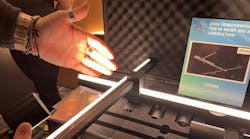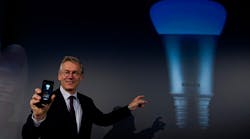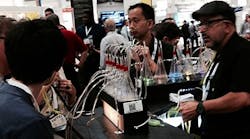Royal Philips, Amsterdam, Netherlands, which since it took full ownership of solid-state lighting component maker Lumileds in 2005 has been pushing solid-state lighting research and product development about as hard as anyone, is moving to restructure its lighting business in a bid for faster growth.
Part of the plan is to combine Lumileds with its automotive lighting business as a stand-alone company and pursue third-party financing, with Philips retaining a stake. The company said it hopes to explore strategic options to attract capital, and will consider an initial public offering among other options. In addition to remaining a shareholder, Philips intends to continue as a customer of the new company, and said it will continue its existing collaboration on technology innovations. By carving out the lighting components and automotive lighting operations, Philips Lighting will focus primarily on networked LED lighting systems and services, luminaires and lamps, the company said in a release.
“Philips’ strategy in Lighting is to intensify its focus on connected LED lighting systems and services, LED luminaires, and LED lamps for the professional and consumer markets,” Frans van Houten, CEO of Royal Philips, said. “Both our Lumileds and Automotive lighting businesses are strong players in the lighting industry and ready to pursue more growth and scale, independently of Philips Lighting. As a world-leading lighting components business, they will have increased flexibility to attract additional investors to accelerate growth.”
Philips’ emphasis on networked LED lighting systems is in line with growth trends in the overall lighting industry that were very much on display at the annual Lightfair International trade show and conference in Las Vegas last month, where almost every lighting manufacturer seemed eager to demonstrate their controls and networking capabilities. Given the proliferation of warm-colored and high-intensity LED lamps that were everywhere at Lightfair, combined with steadily declining price points, it seems that the light-source side of the LED revolution is nearing a point of maturation where the quality of the light itself is no longer the main issue and the pursuit of expanded application capabilities is moving to the forefront. With that technology maturation and price competition, LED lighting components may be approaching a commodity state where margins decline and new product development focuses on smaller, more incremental advances.
In that light, Philips’ concentration on systems and services that promise a better margin over the long term may make sense, especially given that solid-state lighting’s longer product lifespans will almost inevitably bring a day when replacements and retrofits are far more rare than they are today. It’s also likely that further advances in solid-state lighting research amid heavy competition from large Asian manufacturers will require a higher level of investment than Philips alone was able or willing to devote to it, especially as the company is in the midst of a wider shift to emphasize more profitable business lines in areas such as health-care equipment.
Lumileds boasts one of the longest pedigrees in the LED lighting space, having begun as the optoelectronics division of Hewlett-Packard (HP). In the late 1990s, HP partnered with Philips to develop solid-state lighting solutions, and when HP split off Agilent Technologies in 1999, Philips and Agilent formed Lumileds to develop high-brightness LED lighting. Philips acquired Agilent’s interest in Lumileds in 2005.
In 2013, sales of the combined businesses were approximately €1.4 billion ($1.9 billion). The chief executive officer of the new company will be Pierre-Yves Lesaicherre, the current CEO of Lumileds. The process to combine Lumileds and Automotive into an integrated business within the Philips Group is expected to be completed in the first half of 2015. Costs associated with setting up the combined business are expected to amount to €30 million in the second half of 2014, Philips said.
Philips’ announcement recalls the move by Siemens two years ago to spin off 80% of its Osram/Sylvania lighting business as a stand-alone public company. As soon as Philips announced its plan, speculation arose that LED juggernaut Cree Inc. might be interested in acquiring one of its largest competitors, though Cree has said nothing publicly on the matter.











